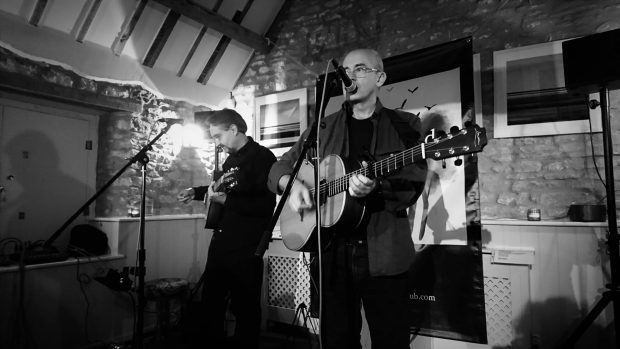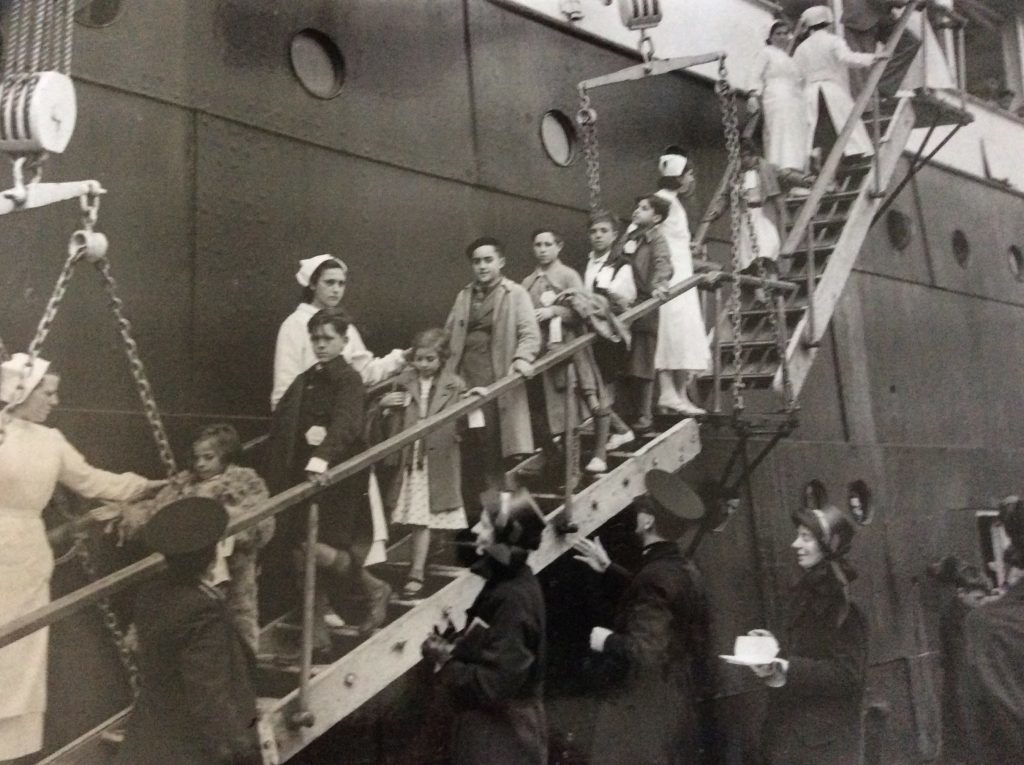The son of a Spanish Civil War refugee has made an emotional journey to Montrose to retrace his father’s footsteps.
In May 1937 the SS Habana sailed from Bilbao with approximately 3,840 children on board accompanied by 80 teachers, 120 helpers, 15 Catholic priests and two doctors.
One of those children was seven-year-old Fausto Garcia who is the father of Hertfordshire folk singer Roberto Garcia.
Fausto was one of 24 children who stayed in a former mansion house in Montrose which was the only Basque colony to be located in Scotland.
Mr Garcia was visiting Montrose for the first time on Saturday to take part in a concert to commemorate 80 years since this little-known period of history which remains the UK’s largest ever single arrival of refugees.
He visited Mall House where his father was looked after as a child refugee by Miss May Wilson, Basque teacher Adelina Larraga and helper and cook Maria Blanco.
“My father spoke very warmly of his time in Scotland and the Scottish people who looked after him,” said Mr Garcia.
“A very special link exists between the people in Montrose who cared for these children who came from the war-torn Basque Country.
“They ensured they were protected while they were so far away from their parents who did not know what had happened to them following the fall of Bilbao to Franco’s forces.
“The generosity and kindness shown by the people of Montrose then is something we should recognise and acknowledge today, extending that same generosity and spirit to today’s conflicts and refugees from current wars.”
Mr Garcia’s folk duo Na-Mara and Scottish-Spanish folk collective Gallo Rojo performed a special concert at the town’s Neptune Bar.
He said: “Our songs are centred around the Spanish Civil War including our self-penned song entitled ‘Only for Three Months’ about the child refugees.
“Despite the fact this event happened 80 years ago when we sing this song we remind audiences that this is a contemporary issue with child refugees affected by wars in the present day.”
The destruction of the town of Guernica by Nazi planes under the direction of Francisco Franco in April 1937 saw the Basque government appeal to foreign nations to give temporary asylum to children.
Although the British Government adhered to its policy of non-intervention, an old steamship designed to carry 800 passengers was loaded and set sail for Southampton Docks.
Children moved into Mall Park House in Montrose which was a former mansion house owned by the Dundee Free Breakfast Mission.
In all, the Basque children stayed in Montrose for almost three years.











